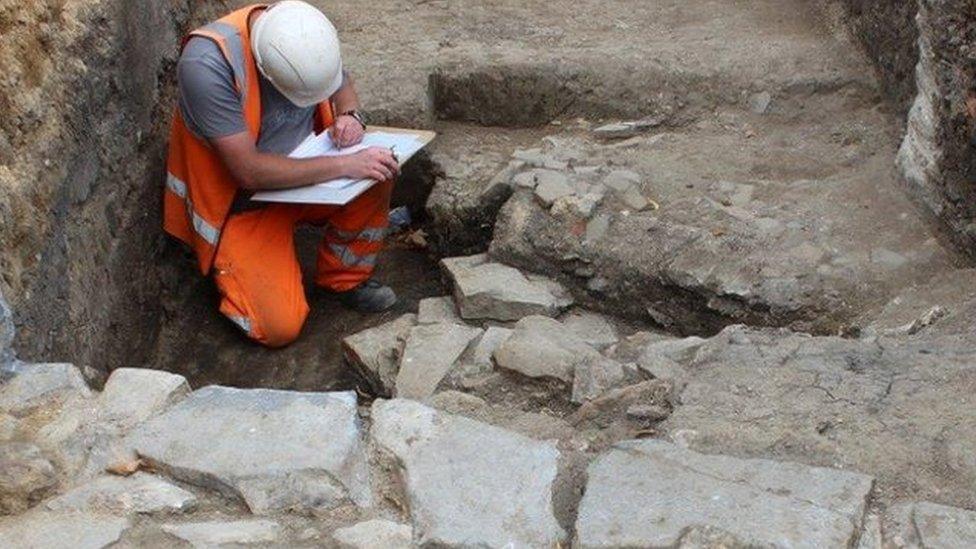Medieval moat of 'high significance' excavated near Tewkesbury
- Published
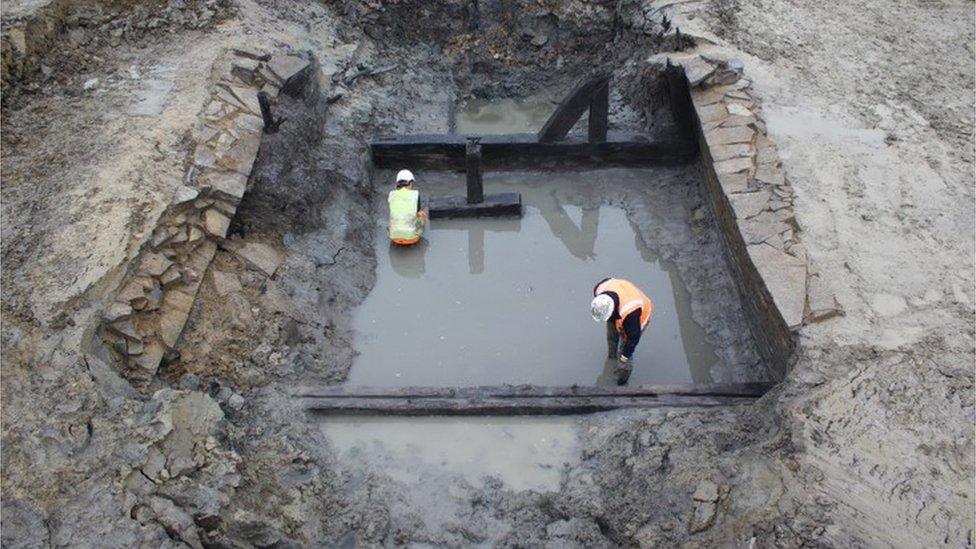
Timbers and stone piers from a bridge across the moat were discovered and dated to the mid-15th century
A medieval moat of "high significance" has been excavated near Tewkesbury.
Archaeologists made the discovery while exploring the site of Cowfield Farm, believed to date from the 12th or 13th centuries.
A newer brick farmhouse was damaged by fire in 2004, which enabled the team to start delving into its forgotten past.
"It's painstaking work picking apart all the deposits and coming up with a story about the site," said Jon Hart, from Cotswold Archaeology.
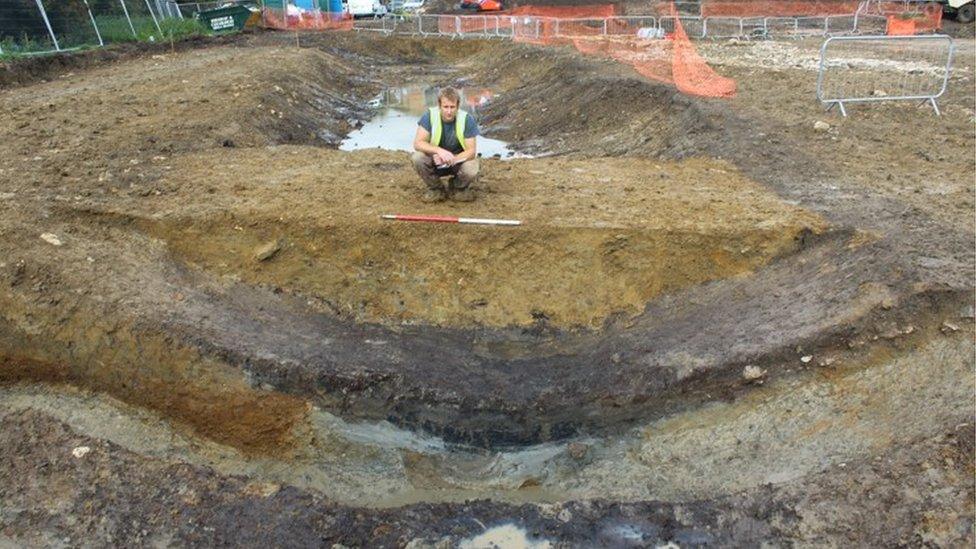
The excavation of the moat has provided archaeologists with an insight into the long-forgotten lives of medieval Gloucestershire farmers
Symbolism
The Cowfield farmers were on the middling rung of peasant society; legally free and holding land as tenants of Tewkesbury Abbey, two miles away.
Further insight into the lives of these long-forgotten Gloucestershire farmers has been gleaned from the dig.
"If you say moat, everybody thinks of a castle with a big moat around it, as a defensive ditch," explained Mr Hart, senior publications officer of the archaeological educational charity, external.
"But moats were used way down the social scale to the wealthier peasants, the movers and shakers of village life.
"A moat was partly for security, as there was no police force; so there was a practical aspect.
"This one was definitely filled with water, with the Christian symbolism of purity and the lady of the house, whose fidelity had to be protected, surrounded by a symbolic virtuous belt of water.
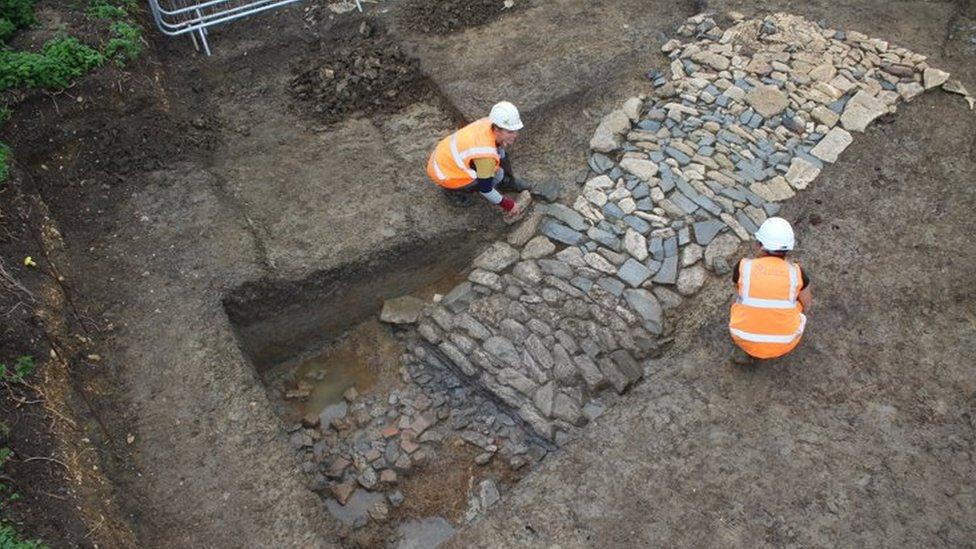
Archaeologists had to strip back the "overburden", or top layers of modern deposits and work their way down through mud and soil before discovering this paved entry way into the moat
The team of archaeologists had a rare opportunity of researching a rural site, and linking their findings to documentary evidence which already exists, particularly in relation to more urban settings.
"We know a lot about medieval towns, but rather less about what was going on in the countryside, so we're really interested in how the two interact.
"Finding a medieval rural site which we can actually directly link to the Abbey, which is smack in the middle of Tewkesbury, is absolutely fantastic," said Mr Hart.
"It's a modern landscape of industrial parks, retail centres and MoD depot, just off one of the M5 junctions.
"At first glance you wouldn't think it was all that interesting for archaeologists, but actually beneath all that, there are layers of time there.
"There are stories to be unpicked.
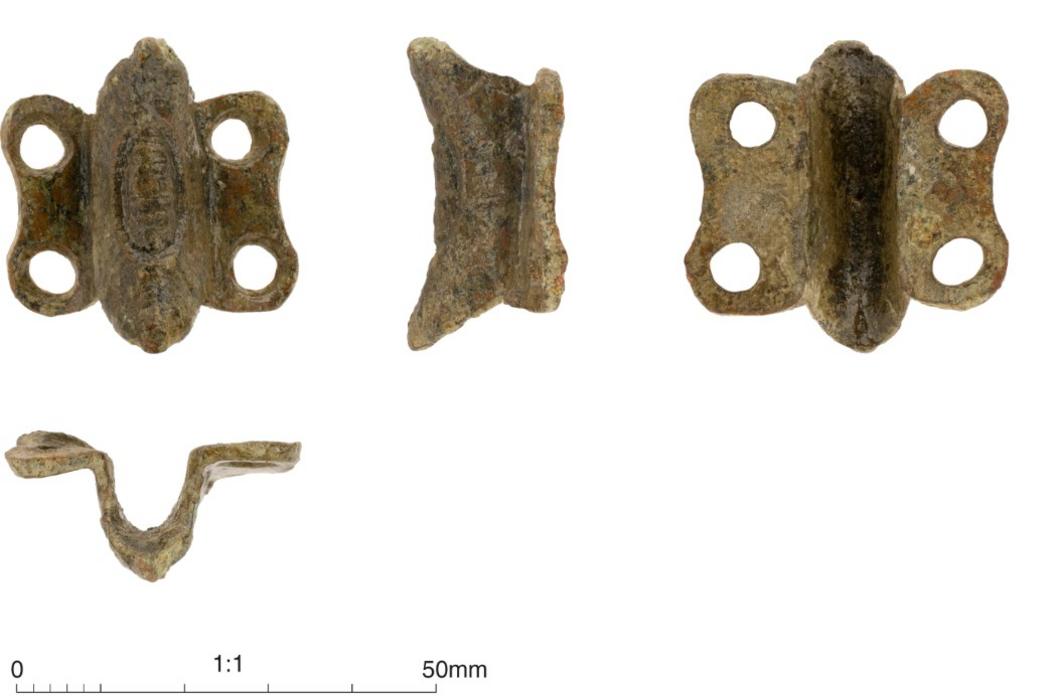
A medieval book clasp was dug up, thought to have belonged to a monk who was recording how much the farm had been producing in a year
Medieval life
The team retrieved artefacts from the dig including a pilgrim badge, depicting the archangel Michael defeating the Devil in the form of a dragon, which speaks of a long spiritual journey, possibly to Mont St Michel in France.
A copper-alloy clasp from a large medieval leather-bound book has also been dug up, probably lost when one of the monks took stock of the farm.
"We can get a really interesting glimpse into the social private life of the farmers.
"We found an unusual bucket-shaped pottery vessel, sort of mug-sized, probably used for women who had just given birth and are lying in bed, recovering, needing nourishing food like broth or soups that are easy to eat when you have a baby crawling all over you."
A wooden bridge across the moat has partially survived and was dated by dendrochronology to the mid-15th century, although the moat is believed to be earlier.
The site has now been covered over, but the archaeological discoveries will be available for research through detailed recording (written, photographic and digital), in what is termed "preservation by record".
A full archive will be stored at Tewkesbury Museum.
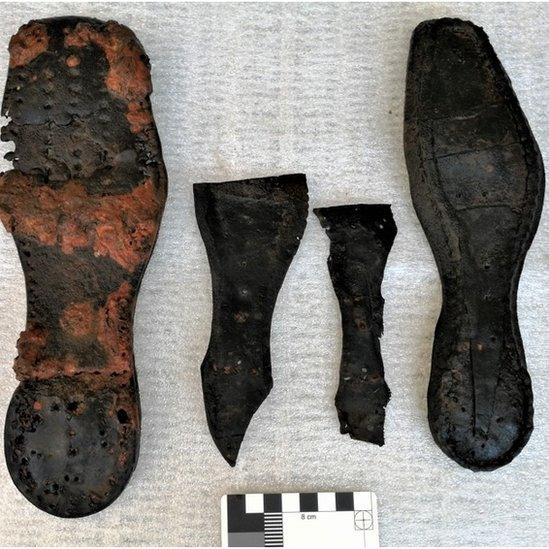
Artefacts, such as this shoe, were extracted by the team, analysed, and archived in Tewkesbury Museum

Follow BBC Gloucestershire on Facebook, external, X, external and Instagram, external. Send your story ideas to us on email, external or via WhatsApp on 0800 313 4630, external.
Related topics
- Published17 January 2024
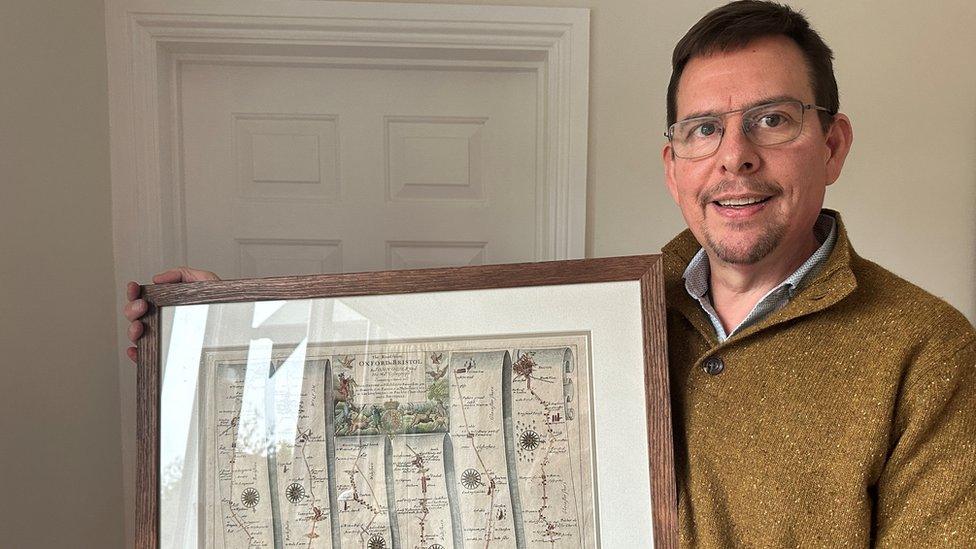
- Published6 September 2023
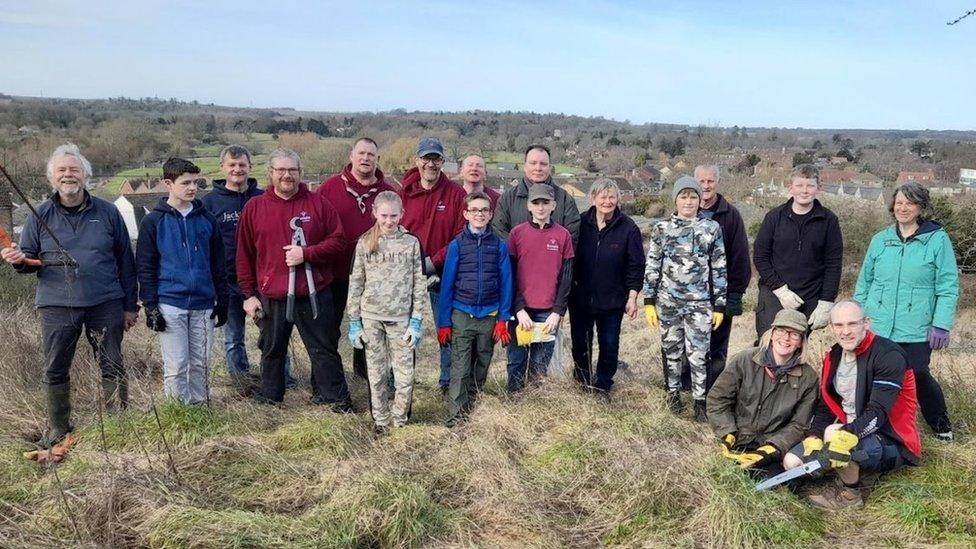
- Published26 July 2023
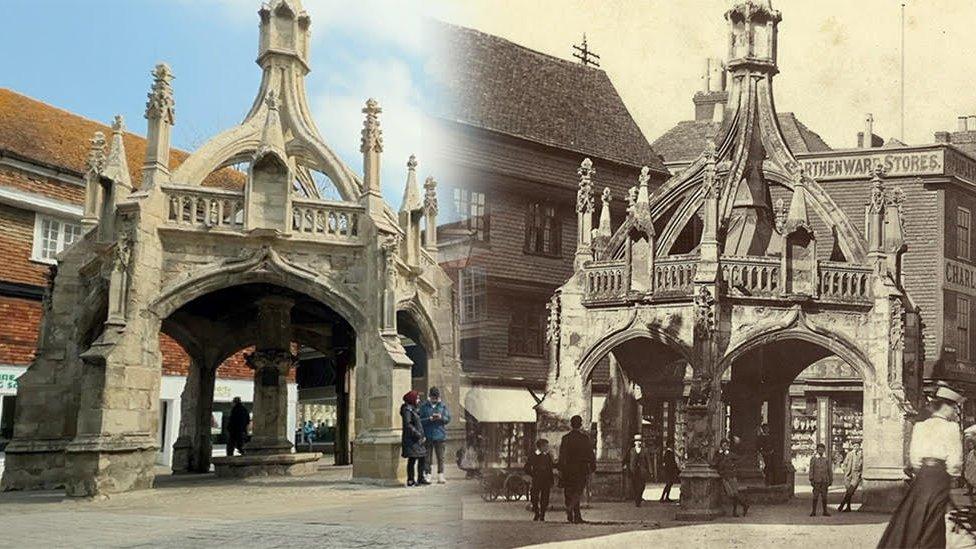
- Published3 February 2022
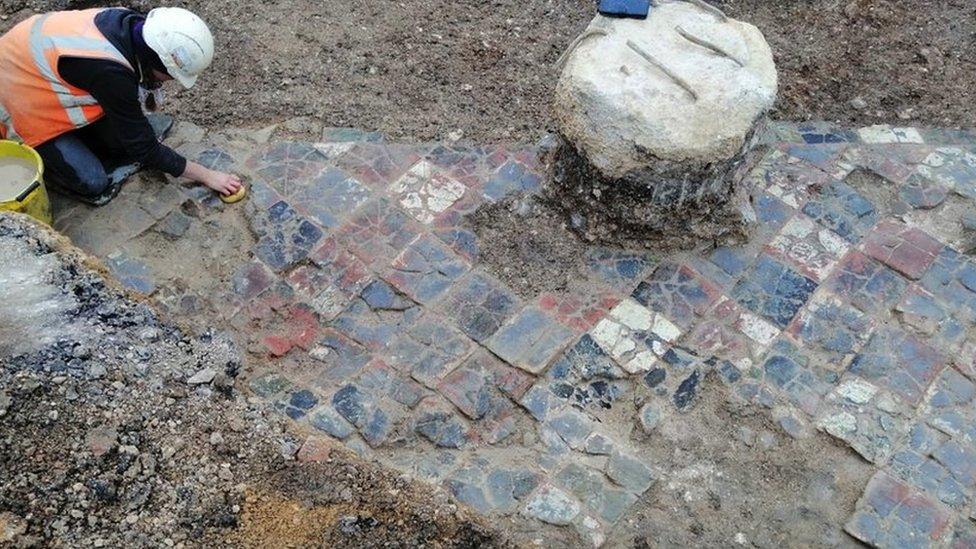
- Published17 October 2020
